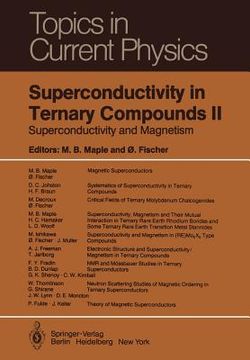Share
superconductivity in ternary compounds ii: superconductivity and magnetism (in English)
M. B. Maple
(Illustrated by)
·
O. Fischer
(Illustrated by)
·
Springer
· Paperback
superconductivity in ternary compounds ii: superconductivity and magnetism (in English) - Maple, M. B. ; Fischer, O.
$ 52.09
$ 54.99
You save: $ 2.90
Choose the list to add your product or create one New List
✓ Product added successfully to the Wishlist.
Go to My WishlistsIt will be shipped from our warehouse between
Friday, May 10 and
Monday, May 13.
You will receive it anywhere in United States between 1 and 3 business days after shipment.
Synopsis "superconductivity in ternary compounds ii: superconductivity and magnetism (in English)"
This Topics in Current Physics (TCP) Volume 34 is concerned primarily with super- conductivity and magnetism, and the mutual interaction of these two phenomena in ternary rare earth compounds. It is the companion of TCP Volume 32 - Superconduc- tivity in Ternary Compounds: Structural, Electronic and Lattice Properties. The interplay between superconductivity and magnetism has intrigued theoreticians and experimentalists alike for more than two decades. V. L. Ginzburg first addressed the question of whether or not superconductivity and ferromagnetism could coexist in 1957, and B. T. Matthias and coworkers carried out the first experimental inves- tigations on this problem in 1959. The early experiments were made on systems that consisted of a superconducting element or compound into which small concentrations of rare earth impurities with partially-filled 4f electron shells had been intro- duced. These dilute impurity systems were chosen because the scattering of conduc- tion electrons by parama9. netic rare earth impurity ions usually has a strong de- structive "pa i r breaking" effect on superconducti vity, typi ca lly drivi ng the super- conducting transition temperature to zero at impurity concentrations of only a few atomic percent. Unfortunately, analysis of these early experiments was complicated by clustering and/or the formation of short range or "glassy" types of magnetic order so that definitive conclusions regarding the coexistence of superconductivity and magnetism could not be reached.
- 0% (0)
- 0% (0)
- 0% (0)
- 0% (0)
- 0% (0)
All books in our catalog are Original.
The book is written in English.
The binding of this edition is Paperback.
✓ Producto agregado correctamente al carro, Ir a Pagar.

